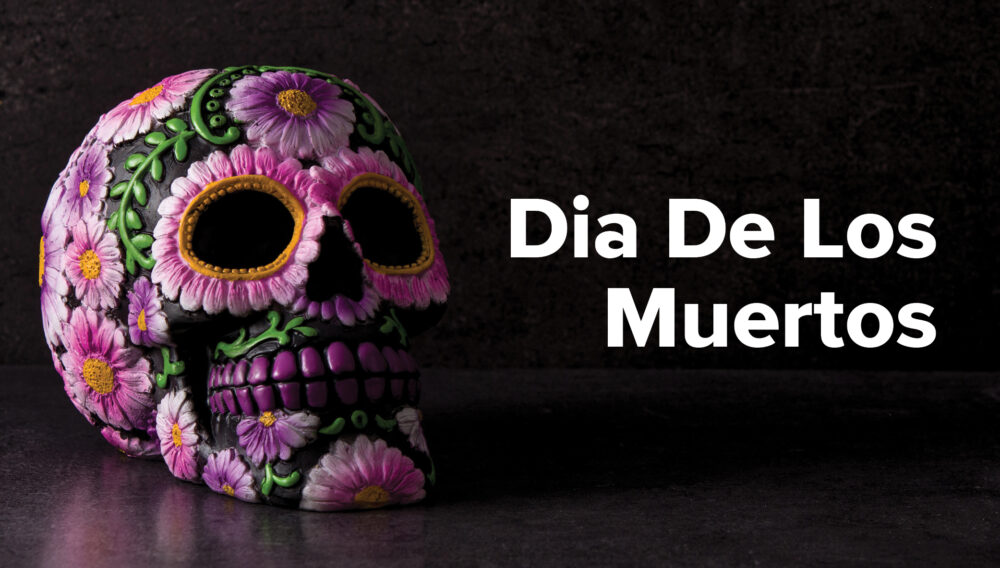Día de los Muertos

What is Día de los Muertos
Throughout history, Mexican culture has emphasized death as an integral part of the cycle of life. In contrast to the common understanding of death as the absence of life, Mexican people approach death in a transitional way. When someone dies, family and friends celebrate the afterlife in which the deceased is about to embark, as well as the life of the people who were close to the deceased. The idea of the oneness of life and death is a strong belief in México and is the main theme of the art and customs of the festival of El Día de los Muertos, or Day of the Dead.
Many Mexican communities continue to keep alive the original traditions of the Day of the Dead. The Zapotecs of Oaxaca, for example, believe that the spirits of their dead relatives will return to their homes on the evenings of November 1 and 2. To welcome the spirits as honored guests, family altars or ofrendas are decorated and freshened, and graves are cleaned and beautifully decorated. The purpose of altars for the dead is to honor and please the returning souls. One does this by including items in the ofrenda, such as food and drink the honored souls enjoyed while they were on earth.
The four elements of life (water, fire, earth, and wind) are represented in the ofrenda. Aztec representations included shells (water), candles (fire), musical flute (wind), and corn, cacao, and chile (earth). Here are some of the other offerings in the altar and what they represent:
Excelsior University staff recommended articles, videos and activities:
https://americanart.si.edu/blog/dia-de-los-muertos-united-states
https://www.nationalgeographic.com/culture/article/day-of-the-dead-la
https://www.thrillist.com/travel/nation/best-dia-de-los-muertos-celebrations-us-day-of-the-dead
https://www.afar.com/magazine/the-most-spirited-day-of-the-dead-celebrations-in-the-united-states
https://www.mexconnect.com/articles/3099-mexico-s-day-of-the-dead-resource-page/
https://cut-it-out.org/



